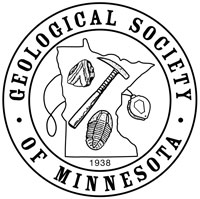Seminar Lab Date:
Seminar Lab presenter:
Seminar Lab Subject:
Seminar Lab Location :
In-person only at U of Minnesota, Keller Hall, Room 3-230
Lecture start time 7:00 PM CT.
There are traffic issues around the U at this time.
Here is the link to MNDOT current traffic
Summary, there is bridge work over the Mississippi on 94. If you can, you might want to come up I-35E instead of I-35W. If so, consider exiting at University Avenue to avoid the backups.
This changes almost daily, so check before you depart for the most current status.
Seminar Lab Details:
Summary: Stromatolites are layered structures built by the buildup of chemical sediment under the influence of microbial communities. Hundreds of stromatolite forms have been identified, most of them in Proterozoic-aged rocks. During the Proterozoic, observed morphologies include flat-laminated, domal, columnar, branching columnar and conical, across scales from a few centimeters to tens of meters. Furthermore, the middle Proterozoic era (~1300-1000 Ma) records the highest diversity of stromatolite forms, with fewer forms recognized in older and younger successions. Although it is well known that stromatolites result from the interaction of microbial communities, detrital sediment, and carbonate precipitation, the controls on stromatolite morphology are surprisingly less well-understood. This presentation explores how macroscopic stromatolite morphology can best be understood as lamina form expressed over time. Because stromatolite laminae represent an active growth surface at the time of formation, they therefore record the topography of the depositional surface, reflecting the interactions between the emergent stromatolite and its environment. This "lamina-upward" approach to morphological analysis provides a useful tool for explaining the complexity and diversity of stromatolite form through Earth history.
Biography: Julie Bartley is a Professor in the Department of Environment, Geography, and Earth Sciences at Gustavus Adolphus College, where she has been working since 2009. Prior to arriving at Gustavus, Julie was a faculty member at the University of West Georgia. She earned her Bachelor’s degree in Chemistry at Bryn Mawr College, her Master’s degree in Chemistry at UCLA, and her PhD in Geology at UCLA.
Most of Julie’s research seeks to recognize and interpret the interplay between life and environment on the early Earth. Her work ranges from the geochemical record preserved in carbonate rocks, to the ways microbes become fossilized, to the large-scale, reef-like structures built by microbial communities on ancient carbonate platforms. These projects have taken her to field areas in Siberia, Arctic Canada, West Africa, Argentina, and the Bahamas, as well as localities in the contiguous 48. This work has also connected her with the search for biosignatures on Mars, and she has worked with teams exploring the best strategies for rover-based science on other planets.
